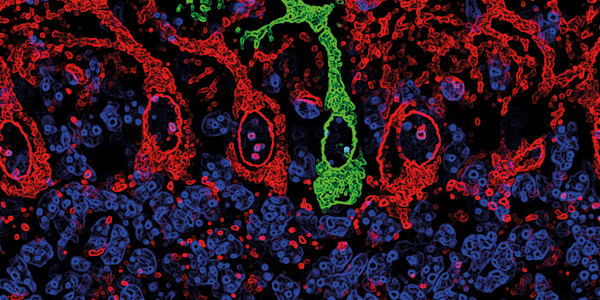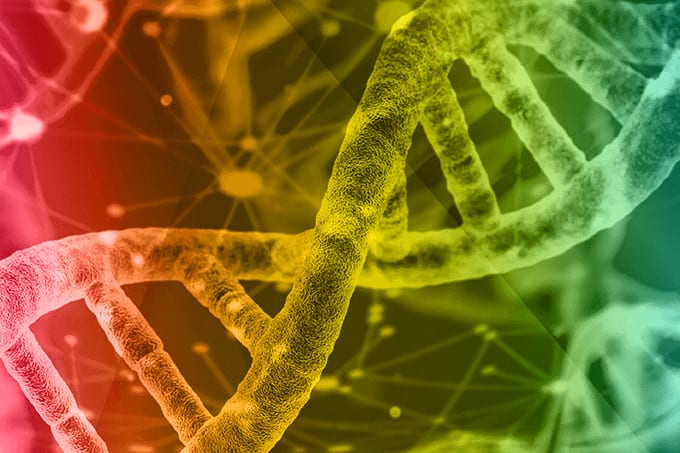Growth charts are a time-honored tool among pediatricians and other professionals who work with young patients. But some types of development are harder to track than others – and variables like capacity for sustained attention, which can be confounded by any number of outside factors, are among the most complex. So how can we improve our ability to detect potential deficits? A new kind of growth chart – one that uses brain imaging to map children’s neural network development against their age – may offer a solution (1).
- Untangling developmental data poses challenges for researchers and diagnosticians, because children change in so many different ways at the same time
- Mapping brain connectivity againstage reveals a standard developmental curve – and can identify patients who deviate from those norms
- Measuring neural connections isn’t easy, but using resting-state fMRI and breaking the possible pairs into meaningful components simplifies the task
- Upcoming challenges include validating the method in larger datasets and applying it to neurodevelopmental disorders
Growing inspiration
Working with developmental data can be really challenging; children are constantly growing and changing in so many ways that it’s difficult to tease apart which changes are meaningfully related. For example, we get taller at the same time as our vocabularies grow – but it’s unlikely that they have a meaningful connection, except that they both change as we age. We had a similar challenge with changes to the brain and children’s increasing capacity for sustained attention; we knew both were developing, but were the two meaningfully related? After some thinking, my colleagues Mike Angstadt, Chandra Sripada and I realized that if we thought about the problem from the perspective of growth charting, what seemed like a challenge was actually a strength! When we see that children who are underdeveloped in one way (like sustained attention functioning) are also underdeveloped on another measure (like brain network development), we have reason to believe there’s a meaningful link. Sometimes, age and maturation are treated as “nuisance” variables in science – meaning that they’re perceived to obscure, rather than illuminate, information – but in this case, we wanted to embrace maturation. We wanted to use a developmental perspective to obtain a more complete picture.MRI: made to measure
We needed a way to measure brain connectivity before we could track it and relate it to attention. Fortunately, in the recent past, neuroscientists have become very interested in understanding brain connectivity. The approach that we used involved so-called “resting state fMRI.” Resting state functional magnetic resonance imaging (fMRI) is a technique in which, rather than taking a picture of a patient’s brain using an MRI scanner, we take a movie – filmed while the patient is at rest and free to think about anything they like. Next, we assess connectivity by looking at the patterns of co-activation; that is, what regions of the brain seem to turn on and off at the same time? In contrast, what regions have a more antagonistic relationship where when one turns on, the other turns off? Using correlations, we get a “connection score” for each possible pair of brain regions that tells us how functionally connected they are. The next challenge we encounter is that, because we track about 1,000 brain regions, there are a staggering number of connections – over half a million! We can’t possibly growth-chart every single connection, and even if we could, how would a pediatrician begin to make sense of it? Instead, we use a statistical method that takes these hundreds of thousands of connections and, by finding consistent patterns, breaks them into a small number of meaningful chunks (which we call “components”). We make growth charts of these components. So far, we’ve found that they can reliably predict attention performance.Brain in balance
An intrinsic connectivity network, or “ICN” for short, is functionally defined as a collection of brain regions that all seem to turn on and turn off together at the same time. ICNs were discovered through the use of resting state fMRI, and since that time, a lot of fantastic work has characterized where these networks are and what they do. This prior work helps us to understand the patterns of brain changes we see. If you think of each brain region as a person, then ICNs would be circles of friends. Many of the regions in the ICN are often close together, but just like friends, some brain regions can keep in touch over great distances.
We were interested in understanding how relationships both within and between ICNs related to maturation and attention performance. In our particular case, there were a few networks that we expected to see based on prior work in adults. One network, the “default mode network,” seems to be involved in inwardly-oriented states like daydreaming. On the other hand, there are a few key attention networks that activate during externally-oriented tasks like doing homework. These two sets of ICNs can interfere with one another, and in healthy adults, we believe that an important aspect of attention functioning is having the default mode network “get out of the way” of the attention networks. In fact, previous research has shown that if we look at instances of lapsed attention during a task, we’ll often see the default mode network lighting up and getting in the way. For this reason, we expected that changes both within and between these two sets of networks would be important for explaining attention functioning – and we were excited to see that this was indeed the case. Although our research group is particularly interested in understanding attention deficit hyperactivity disorder (ADHD) and related issues like attention and self-control, we think that the same type of ICN analysis would naturally extend to other neurodevelopmental disorders. In fact, that’s the direction we think the field is headed: A 2014 publication in Neuron (2) urges us to think developmentally about the functional architecture of the brain and how it relates to problematic conditions. That’s why, as we run follow-up studies to validate our findings, we’ve made our connectivity pattern maps available online so that other researchers can use them to examine their own datasets.

Connectomes in the clinic?
Although this type of growth chart is still a long way from seeing the clinic, we think it has a lot of promise. Unfortunately, MRI scanners – which we used in our study – are expensive and not widely available. We’d like to take the insights we’ve learned so far and try to apply them to data from electroencephalogram (EEG) machines, which are much cheaper and more common in everyday clinical settings. If the approach translates to EEG, it might offer a useful diagnostic tool for physicians to better understand the sources of attention problems. We’re still learning a lot about the brain, but it’s my hope that, if we can identify what goes wrong in a specific individual’s brain, we can provide much more targeted treatment and support. For example, suppose that your child is struggling to pay attention in class. Neurologically, this could indicate a problem in that the default mode network is intruding on the attention networks – or it could just be an issue with how the attention networks are doing their jobs. You’d take your child to a pediatrician, who would order an EEG to score your child on growth charts for brain networks that have been identified as attentionally relevant. The doctor would then combine this information with a wealth of other data – for instance, reports from parents, teachers and the child themselves – to make a diagnosis and determine a treatment plan. That scenario is still a long way off, but I can imagine a future where a physician, armed with brain network growth charts, could prescribe treatments that target the specific brain problem, rather than the general behavioral problem. Daniel Kessler is a Research Computer Specialist in the Department of Psychiatry at the University of Michigan, USA.References
- D Kessler et al., “Growth charting of brain connectivity networks and the identification of attention impairment in youth”, JAMA Psychiatry, 73, 481–489 (2016). PMID: 27076193. A Di Martino et al., “Unraveling the miswired connectome: a developmental perspective”, Neuron, 83, 1335–1353 (2014). PMID: 25233316.




